Want to know some interesting facts about the Dead Sea? Get ready to swim through some salty knowledge with these fun facts about the Dead Sea. Let’s go.
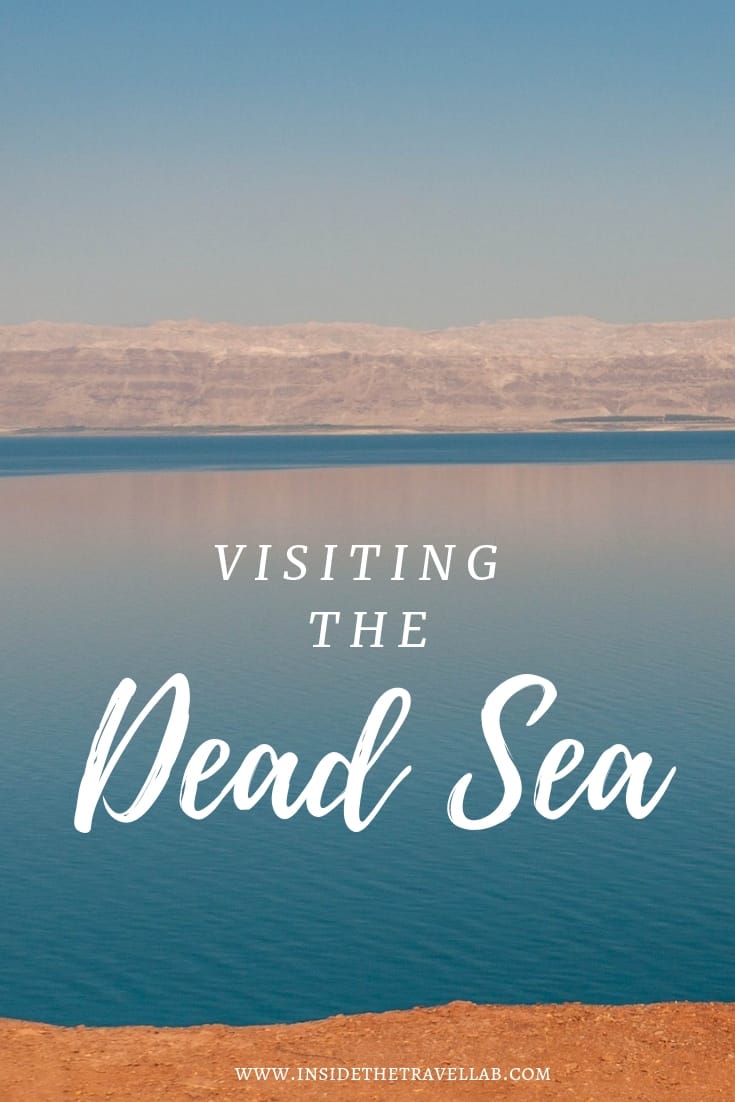
Interesting facts about the Dead Sea and how to visit it
Interesting Facts about the Dead Sea
Let’s face it, the Dead Sea has a depressing name. But it’s actually a place of fun. At 427 metres below sea level, it’s the lowest point on earth. And its hypersalinity, or high salt levels, make it impossible for life to survive.
It also makes it possible for adults to turn into children as they flip about like penguins on an oily escalator…with all the grace of a slippery turnip.
You see, it’s hard to swim in the Dead Sea. It’s like trying to tap dance on ice.
And woe betide anyone who gets a taste of the water of death: as befits its name, it’s disgusting.
But personal anecdotes aside for a moment, let’s talk about the interesting facts about the Dead Sea. And where it is.
Where is the Dead Sea?
The Dead Sea is a salt lake between Israel and Jordan in the Middle East. It is the lowest point on earth.
Fun Facts About the Dead Sea
1 – It’s the lowest point on earth
The most famous Dead Sea fact is that it’s the lowest point on earth. But how does that work? How can a sea be lower than sea level?
Well, because it’s actually a lake rather than a sea. A lake whose surface is 1300 feet below sea level. To put that into context, Death Valley, North America’s lowest point, is only 282 feet below sea level.
So how deep is the lake? The lake bed is estimated to be around 2300 feet below sea level.
2 – It’s very hard to swim in it
When it comes to fun facts about the Dead Sea, just try swimming in it. It’s surreal and nearly impossible. The hypersalinity means that you float on the surface and your body weight feels and moves differently in the water. Those photos of someone relaxing and reading a newspaper in the water? They’re real, alright, but they don’t show just how difficult it was to get into that position to begin with.
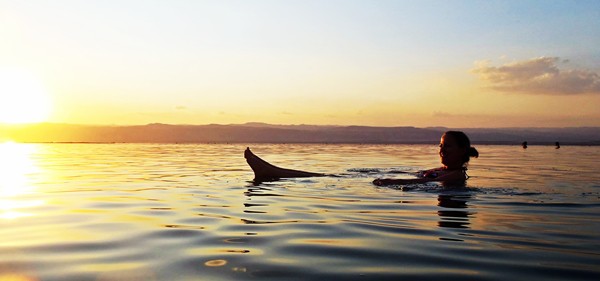
3 – The water tastes disgusting
Around 34% of the Dead Sea is salt. And it does not taste good.
4 – The mud is supposed to be good for your skin
Who knows quite how these things get started but along the banks of the Dead Sea, you’ll find beauty resorts and spa treatments aplenty. Both the Dead Sea salts and the less poetically named mud carry anti-inflammatory health properties, apparently. They can cure all muscle aches and pains and leave you looking twenty years younger. Or something like that.
There’s no denying that the mud feels silky smooth, though, like nature’s own glossy facial. The ideal “treatment” is to bathe in the saltwater of the Dead Sea, coat yourself in thick mud and then rinse off as the sun sets.
It may or may not work but it definitely is fun!
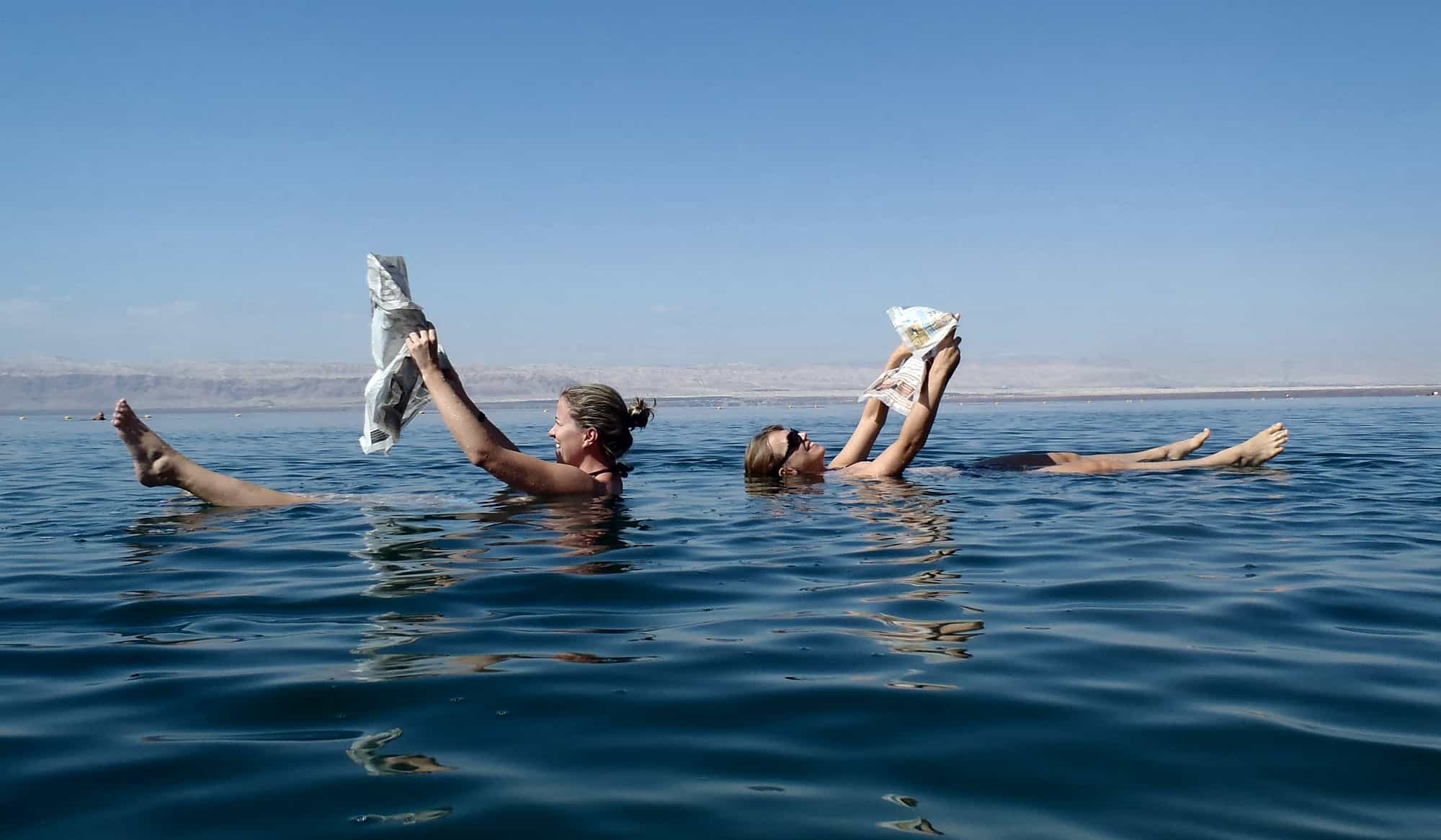
5 – The salt stings!
A word to the wise. The salty water will STING any open cuts you have. Do not shave before you go in! And that applies to anywhere in the Dead Sea area.
6 – It’s not actually the saltiest place on earth
It’s not actually the saltiest place on earth. Nor even in the top three.
7 – You can see another country
You can stand on the banks of the Dead Sea in Jordan and gaze across for a view of Israel’s West Bank. And vice versa.
However, it’s a myth that you can see Jerusalem or Tel Aviv from the banks of the Dead Sea. They are at least 100km away.
And more fun facts about the Dead Sea. In Arabic, it’s the Al-Baḥr Al-Mayyit (“Sea of Death”), while in Hebrew it’s Yam HaMelaẖ (“Sea of Salt.”)
8 – Almost everything is dead
The only things alive in the Dead Sea are bacteria (and a few people floating at the edge, trying to make it look as though they’re reading a newspaper.) The high salt content makes it very hard for anything to survive, apart from microscopic organisms and a few specialised aquatic plants.
9 – It was formed by a rift in the earth’s crust
Over 3 million years ago, two of the earth’s tectonic plates pulled apart to create the Dead Sea: the African plate on one side, the Arabian plate on the other. The resulting rift or graben (the German for ditch) used to connect to what is now known as the Mediterranean Sea. Over time, that connection sealed up, leaving the Dead Sea as an inland salt lake. Today, the Jordan River flows into the lake at the northern end. For those of you interested in such things, there’s more about the Dead Sea history at the end of this article. Don’t say I never give you anything!
10 – It has a secret ingredient
The Dead Sea is the main source for agricultural potassium worldwide. See. You knew there was a reason why you read this far!
Had enough fun facts about the Dead Sea or are you ready for a bonus?
Here goes. The Dead Sea was mentioned in the bible and the first ever tourist to visit was likely Abraham. A little nugget of tourism history for you! The facts around King David, on the other hand, are harder to track down.
11 – The ancient Egyptians used Dead Sea products to preserve their mummies
Apparently the black coating used during the embalming process came from the Dead Sea. The active component is known as “vanadyl porphyrins.”
Does anyone know any more fascinating facts about the Dead Sea?!
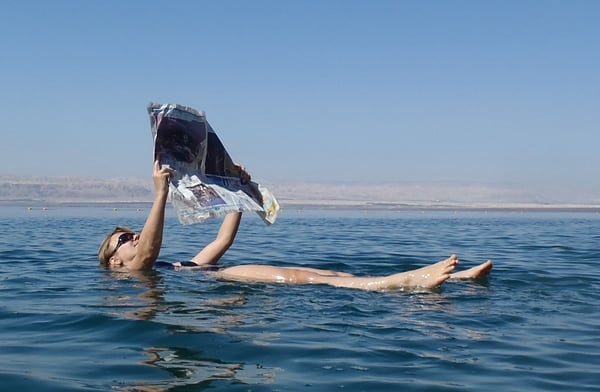
How to take a photo in the Dead Sea
There in the Jordan Rift Valley, with Israel on one side and Jordan on the other, grown adults behave strangely.
For one, they grab a newspaper in a language they can’t read and battle to make it into the water without getting it wet. They float like rudderless cheery souls as they try to assemble for a photo. And for the finale, they slather themselves in thick black mud to create a slick human wetsuit before hopping back into the sea to wash it off.
And all this in the name of beauty (or perhaps, one suspects, the quest for a good photo.)
But in all seriousness, here are some tips on taking a good photo in the Dead Sea, one of the saltiest bodies of water in the world.:
- Leave your camera on the shore and ask someone else to take photos
- Borrow a newspaper. Hold it above your head until you are deep enough to lean back and float.
- Act quickly. It’s harder than it looks to stay still on the surface of the Dead Sea (and not at all relaxing!)
- Make sure you’ve thoroughly washed off any mud or saltwater before you touch your camera or phone again. The salt can really damage them.
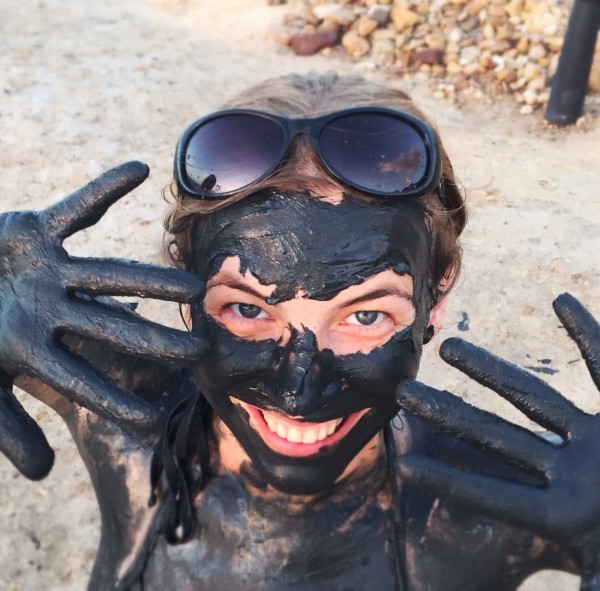
How to visit the Dead Sea
You can visit the Dead Sea region from either Israel or Jordan and stay at one of many luxury “beachside” hotels. If you hire a car from Amman in Jordan, it’s a straightforward drive and at a push you could do it in a day. But it’s beautiful at dawn and sunset so I’d highly recommend you stay the night.
See how to fit a trip to the Dead Sea into your Jordan itinerary here. And if you’re looking for a reputable tour group company, I can highly recommend the Jordan Escape trip from Globus.
More Questions About the Dead Sea
Why is the Dead Sea called the Dead Sea?
The Dead Sea gets its name because there’s nothing visible to the human eye that can live in it due to the high salinity. That includes macroscopic organisms like fish and seaweed. However, microscopic organisms like bacteria and fungi do manage to survive the hypersalinity.
How deep is the Dead Sea?
The Dead Sea is 306 metres deep, the deepest hypersaline lake in the world.
In which country is the Dead Sea?
The Dead Sea sits between Jordan and Israel.
Can you visit the Dead Sea?
Yes! In fact, it’s a popular tourist spot with health and wellness spas on both the Jordanian and Israeli sides.
What other names are there for the Dead Sea?
You’ll also hear people use the following terms when it comes to talking about the Dead Sea, this famous body of water: in Arabic, it is Al-Baḥr Al-Mayyit ( literally the “Sea of Death”), while in Hebrew it is Yam HaMelaẖ (which means the “Salt Sea.”)
Are the Dead Sea Scrolls real?
In short, yes, they are. The Dead Sea scrolls are documents which were found close to, you guessed it, the Dead Sea. Although they are nearly two thousand years old, they were only discovered again in the 1940s and 50s. Nobody knows exactly who wrote them, but they contain ancient texts of the bible in Hebrew and other languages. You can find out more about the Dead Sea Scrolls here.
Is the Dead Sea mentioned in the Bible?
Yes, it is. But not a lot. You’ll find the Dead Sea in Chronicles II 20 and in Ezekiel. And again, it goes by other name. Most of the time its the Salt Sea, but also the Sea of Sodom, the Stinking Sea (blame the sulphur and the rotten egg smell) and the Sea of Lot. Yes, the man who turned his wife into a pillar of salt.
Dead Sea History
It’s astonishing to think that the story, or history of the Dead Sea, begins around 200 million years ago. At the time, this section of land sat beneath today’s Mediterranean Sea. That’s during the Jurassic and Cretaceous periods for those keeping track.
Then came the Miocene Epoch around 23 million years ago. The Arabain Plate crashed into the Eurasian Plate, creating the Transjordanian highlands and the central area of Palestine. It also created what’s known as a graben, a downfaulted block of the Earth’s crust, or a sunken area in plainer language.
The Dead Sea was born. At the time, geological historians predict it was about the size it is now. But then things changed.
During the Pleistocene Epoch, the water level was a cool 200 metres higher than it is now.
But time passed. By the time we hit 2.5 million years ago, a mix of rock salt, sandstone, clay, shale and gypsum filled the lake, forming layers of sediment. Then came more clay, more gypsum and even some sand and gravel.
Over the last 10 000 years or so, the lake has been shrinking. In part from water evaporation, in part because surrounding countries have diverted water from upstream. The result is that fresh water is creating sinkholes, you’ll see more layers of clay and sediment at the edge. And you’ll have to walk further from your hotel to reach the water.
More on Travel in Jordan
See our travel guide to the best things to do in Jordan and then browse through the articles below.
- Jordanian Food: the 21 dishes you need to know
- These facts about Petra will surprise you
- Is Petra at night worth it?
- How the Madaba mosaics show the pathway to peace
- How to plan your perfect Jordan itinerary
- Is Jordan safe for solo female travellers?
- Working about the best time to visit Jordan
- Why bedouin coffee is more than just a drink

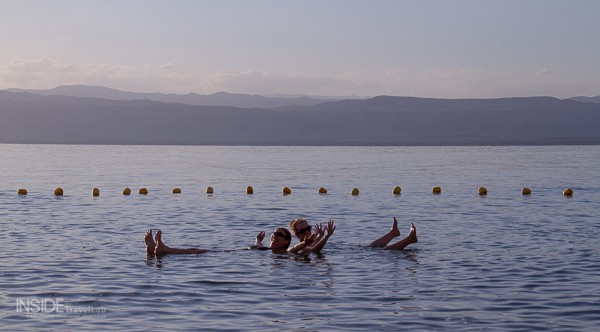
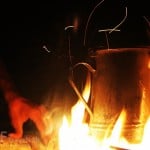
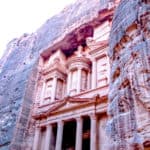


It looks fabulous! This in an experience I would love to live!
There’s really nothing quite like it – so much fun!
The dead sea was a great time playing in the mud and float without effort. I was kinda of scared something might get in there but nothing can live.
The most dangerous part was tasting it, I think. Vile, vile, vile…